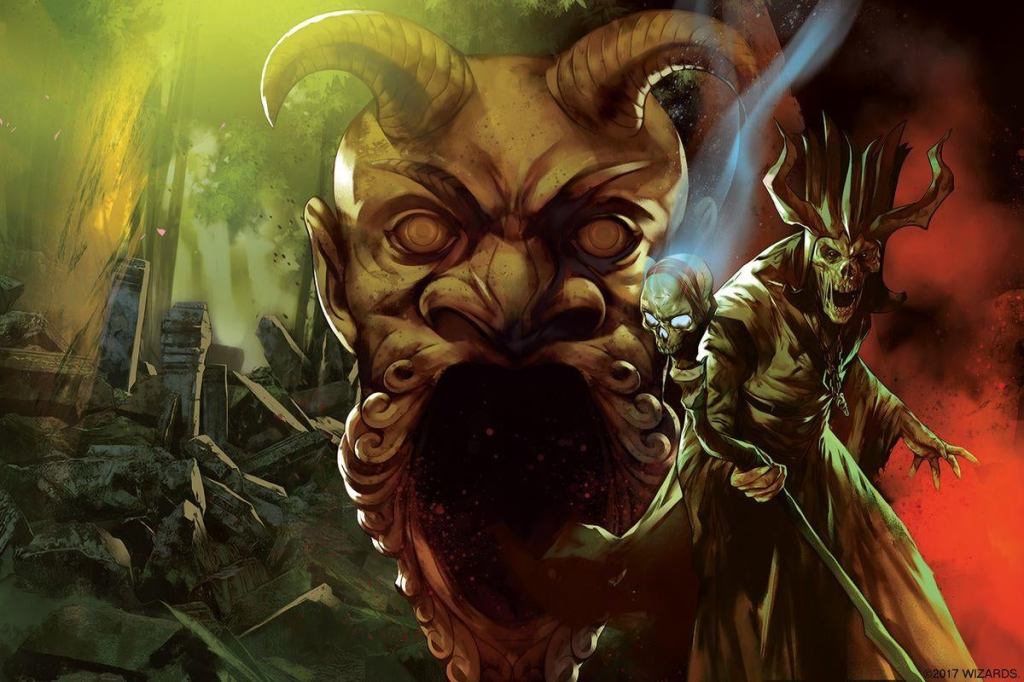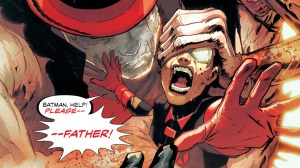A noticeable shift has occurred in how Wizards of the Coast looks at and presents Dungeons & Dragons. This isn’t exactly a revelatory statement for those who closely follow the game/budding entertainment franchise, but last week’s D&D Direct provided more insight as to how Wizards of the Coast is changing up its approach towards the game, with a shift from nostalgia-focused products that remade or revisited big characters and locales in the products, to products informed by nostalgia and the past, but approached the game in new and different ways.
Videos by ComicBook.com
When Wizards of the Coast first released Dungeons & Dragons Fifth Edition back in 2014, the company’s release schedule was deliberately slow, with an emphasis on revisiting classic adventures and villains that were mostly set in the Forgotten Realms. Early adventures were either retooled versions of classic adventures (such as Princes of the Apocalypse retooling The Temple of Elemental Evil and Curse of Strahd revisiting the first Ravenloft adventure) while others focused on well-known and established D&D antagonists (early adventures featured enemies like Strahd, Tiamat, and a bevy of demon lords.)
Wizards slowly began moving from their “top level” approach to D&D in 2017 with the release of Tomb of Annihilation, an adventure that featured a new version of the classic dungeon Tomb of Horror, but also focused on the Forgotten Realms region of Chult. Subsequent adventures served to highlight specific areas, with Waterdeep, Icewind Dale, and Baldur’s Gate all receiving gazetteer-esque sections in adventures. As the adventures shifted to more obscure villains (with the minor goddess Auril and the arch-devil Zariel both the subject of adventures in recent years), those D&D campaigns seemed to serve as reintroductions of sorts for key parts of the Forgotten Realms.

At the same time, Wizards of the Coast also started to bring back campaign setting books, first with Guildmaster’s Guide to Ravnica and Eberron: Rising From the Last War. Both Ravnica and Eberron seemed to serve as a test subject of sorts for Wizards – Ravnica proved that Wizards could successfully crossover its Magic: The Gathering and D&D brands (to date, Wizards of the Coast has released three D&D sourcebooks focused on Magic: The Gathering settings), while Eberron seemed to test the waters as to whether growing TTRPG market had an appetite for D&D’s other worlds. Eberron was a great test subject in several ways – the world was radically different from the Forgotten Realms in several ways, had a stalwart and dedicated fanbase, and had plenty of existing lore that didn’t need much tweaking to re-present to a modern audience. It proved that the Forgotten Realms didn’t need to be the sole setting for D&D – other existing worlds had a place with the growing fanbase of the game.
In 2020, Ray Winninger was hired as the new head of the D&D Design Studio. By this point, Dungeons & Dragons was more popular than it had been at any point in time in its history, thanks to its easy-to-use Fifth Edition ruleset, digital toolsets like D&D Beyond and Roll20 that furthered its ease of use as well as wide exposure from shows like Stranger Things and popular “let’s play” series like Critical Role. There also seemed to be a bit of fatigue with the Forgotten Realms and the types of stories and themes it provided. Fans wanted more D&D books, but they also were looking for more out of what they could do with the game itself.
In early 2021, Winninger noted that there were several products in development that would re-visit various classic D&D campaign settings. The 2021 release Van Richten’s Guide to Ravenloft provided a template of sorts for how Wizards would present these new settings. Van Richten’s Guide to Ravenloft focused on the horror aspects of the franchise, with much of that realm’s lore discard in favor of a new approach that saw each Domain of Dread represent a different sub-genre of horror. While the iconic Darklords of Ravenloft were still present, many were reimagined to fit these different sub-genres instead of being pastiches of different kinds of classic horror monsters. This was still “Ravenloft” but it was a Ravenloft reimagined to fit the needs of the D&D playerbase.

Now we’re seeing that “reimagining” come to two other classic campaign settings. Earlier this month, Wizards announced it was developing new Spelljammer and Dragonlance products. Just as Ravenloft emphasized the horror aspects of that campaign setting, both Spelljammer and Dragonlance are being re-focused around different themes. Spelljammer seems to be getting a major facelift, with the setting merging with the Astral Sea and the swashbuckling adventure elements emphasized. The focus of Dragonlance seems to be on large-scale warfare, with an adventure explicitly taking place during the War of the Lance and a board game that simulates army-scale warfare.
How much change is being made to each setting remains unclear (Wizards has noted that Dragonlance’s past stories won’t be “invalidated” by the new product, but at least some aspects to Spelljammer are being changed), but it seems that Wizards is tying different kinds of themes and campaign styles to different settings. This doesn’t necessarily invalidate past versions of those campaign settings, but it leverages them in different ways by emphasizing campaign “styles” rather than simply providing players with different worlds with different lore. Each world is being sculpted to provide different “kinds” of campaigns, meant to appeal to different kinds of players. We saw an early example of this with last year’s The Wild Beyond the Witchlight, which attempted to demonstrate that the combat-heavy D&D didn’t need constant combat in a full-length campaign.
At the same time, we’ve also seen a shift in how Wizards of the Coast is approaching its anthology releases. Both Tales From the Yawning Portal and Ghosts of Saltmarsh were in essence reprints of old D&D adventures, updated with 5E statblocks and rules. But with the release of Candlekeep Mysteries and the upcoming Journeys Through the Radiant Citadel, we’re now seeing anthologies with new adventures, written by a bevy of diverse writers. Once again, these adventures are meant to reflect the different ways D&D can be played. Candlekeep Mysteries emphasized mysteries plotlines, while Journeys Through the Radiant Citadel builds on the idea that D&D can use the traditions and viewpoints of any culture as a foundation, as opposed to being looked at through a Eurocentric lens.
With the D&D Direct, we are seeing more and more signs that Wizards of the Coast wants to emphasize the diversity of what Dungeons & Dragons can be. It’s a game system that can be used in different ways to tell different kinds of stories. Although the game is still most associated with dungeon delving and combat against monsters, we’re seeing Wizards of the Coast use its settings and releases to show that Dungeons & Dragons is much more than just Dungeons and Dragons. It can be horror, or whimsy, or swashbuckling, or epic war stories. And by leveraging past campaign settings, it’s simultaneously giving fans what they want while also finding ways to interpret those worlds in new ways.









